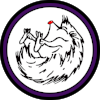What to eat?
/Figuring out what to eat each day can be frustrating. We read the nutrition labels and try to do the math to calculate the calories, protein, carbohydrates, salt or whatever the important nutrient is for the week. But how does this help us eat healthy?
If you follow the 2015 US dietary recommendations, you will 1. Follow a healthy eating pattern, 2. Focus on variety, nutrient density, and amount, 3. Limit calories from added sugars and saturated fats and reduce sodium intake, 4. Shift to healthier food and beverage choice, and 5. Support healthy eating patterns for all. This does focus us more on trying to limit non-healthy foods and drinks along with limiting salt (to 2,300 mg sodium a day) , sugar (less than 10% of calories from added sugar) and saturated fats (10% of daily calories).
Examples of foods on the site http://health.gov/dietaryguidelines/2015/guidelines/ try to point you away from the high calorie foods and do give lower calorie options. They do not come straight out and say we should stop eating junk food and at restaurants but it is kind of implied, which is good. I understand how these recommendations developed and would love to see the original version. They are from the government that subsidizes corn (corn syrup), soy (seems to be in everything), dairy and meat. On top of this lobbyists for Big Food have to be considered when making the recommendations. So considering all of this, these recommendations are actually pretty good.
There is a simpler way to figure this all out, though. Thinking of food in 3 different categories: natural or minimally processed, processed and ultra-processed makes more sense to me. Natural foods are in their whole, natural form. Some foods may need some minimal processing to preserve them for storage. With minimally processed foods no additional salts, sugars, oils, fats or other preservatives are added. Some minimally processed foods may consist of cleaning and removing some parts, grinding or fermentation. Examples of natural or minimally processed foods are grains, rice, fresh or frozen vegetables and fruits, beans, and nuts. These natural or minimally processed foods are what we should be using to make our meals and snacks. Processed foods are recognizable as modified versions of the original foods. Canned fruits and vegetables, cheeses, cured meats and breads are adjusted in a way with additives to prolong their shelf lives. Usually when these foods are changed by processing they lose some of their underlying nutrients. These foods should be a small part of a larger meal. Then ultra-processed foods are industrially manufactured and contain substances extracted from foods. These are the foods that have more than 5 ingredients in them or you cannot say an ingredient in the list. Most restaurant meals are also in the ultra-processed food category. These foods should be avoided.
These definitions and recommendations come from the Dietary Guidelines for the Brazilian Population that you can find at: http://www.foodpolitics.com/wp-content/uploads/Brazilian-Dietary-Guidelines-2014.pdf. This document goes in to detail on the three types of food and give examples of meals. If you follow their recommendations, you won’t have to worry about salt intake or added sugar because the high salt and sugar foods that are processed will be limited in your meals. You will know what is in your food since you put it there. These recommendations also go along with Michael Pollan’s: eat food, not much, mostly plants.

